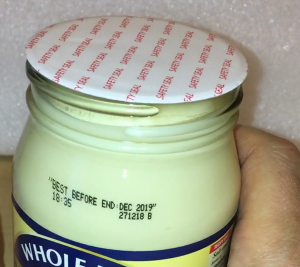The Video Below, with SealerOn™ Breakthrough Glass Induction Sealing Material, demonstrates how easy it is to apply an induction seal onto a glass pack that is using a plastic lid.
Heat Shrink Bands
 Heat Shrink Bands can often be a very user unfriendly part of packaging for products in Glass.
Heat Shrink Bands can often be a very user unfriendly part of packaging for products in Glass.
Clients purchasing products in Glass often do so with the thought that is it premium packaging preserving the purity of the product.
They can also expect there is environmental benefits as the packaging is easily identified and separated for recycling.
When faced with removing (with some difficulty) a super lightweight piece of unknown plastic (often PVC), it is clear this is a near transparent piece of plastic that could be even more devastating than plastic bags; perhaps the perfect “turtle (marine life) choker”.
On the production side of things, applying heat shrink bands can be a tricky and sometimes dangerous set-up. It involves high temperature heat guns, blowers or steam tunnels. It also involves dealing with a lightweight film in individual pieces or in tube form where consistent placement and finish can be very difficult.
Universal Induction Foils
For a long time, universal induction foils for glass have been available, however, they have proven to be effective mainly for dry products and powders. Wet or oily products can appear to be sealed by these universal foils, however, in time what looked like well sealed products end up having a foil that lifts off the sealing rim “on its own”.
Glass Induction Material
SealerOn™ breakthrough glass induction sealing material has been shown to work on wet products and oily products such as coconut oil.
At SealerOn™ we have solutions to seal glass with Plastic Caps and we even have solutions to Induction seal Glass that has metal caps!
At our sister Tradename LabelOn™ we have solutions to do away with the turtle chokers using labels;
Talk to us about how to enhance the User and your Production line experience.
Click the Link:
Contact Us
Or for an instant chat, Click the Link:
Chat with Us
Note the induction sealing machine used in this video is the SealerOn™ Mini
See: https://sealeron.com/v/mini01
it is designed to feed directly on a LabelOn™ Mini Synergy machine
See: https://view.label-on.com/lmsbcdvswrap
SealerOn™ Capless Induction Sealing Glass Bottles Metal Lid – YouTube
https://sealeron.com/v/glass5head
Tamper Evident Jar Labeling – LabelOn™ – YouTube
https://view.label-on.com/tamperevident




